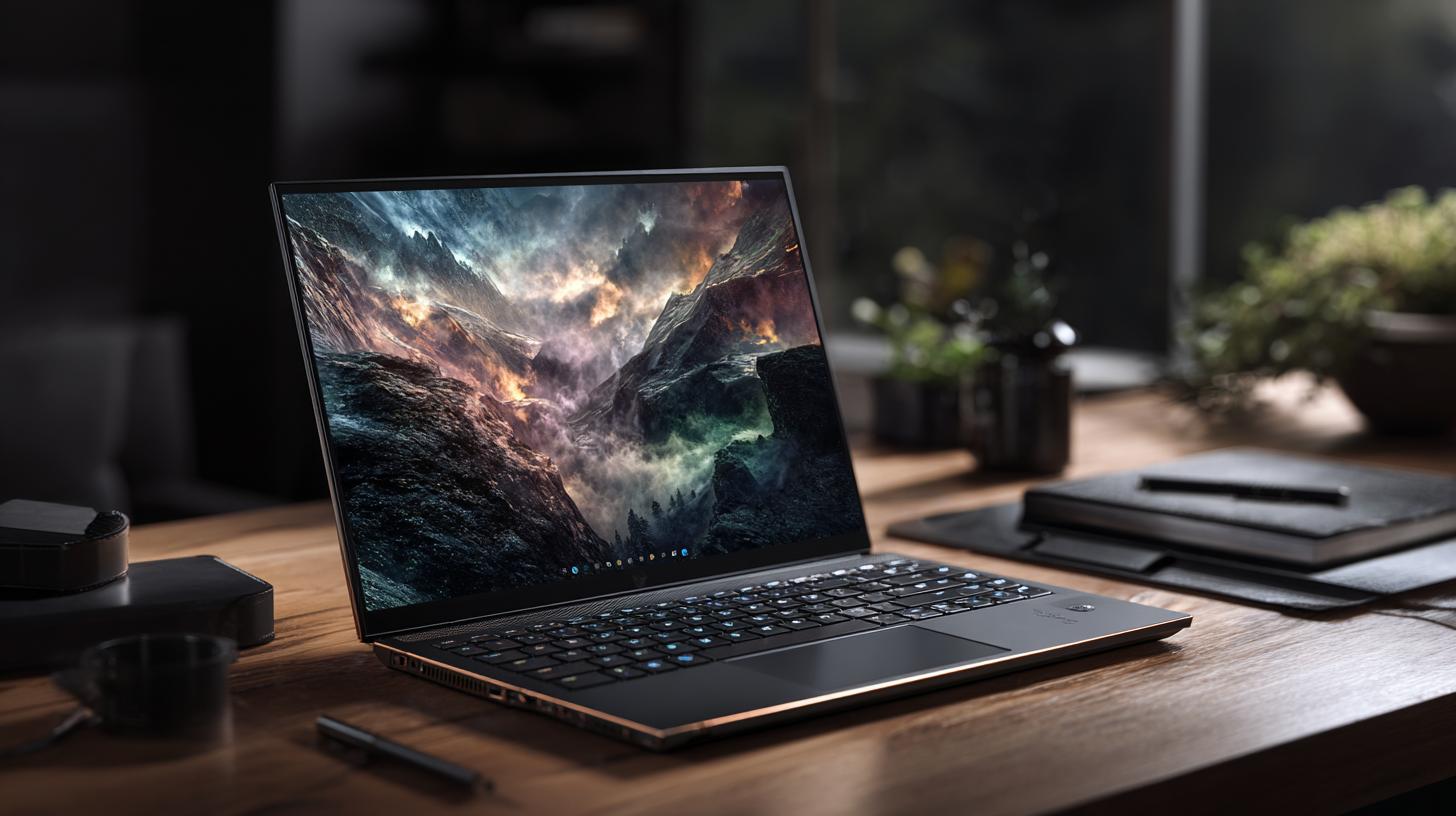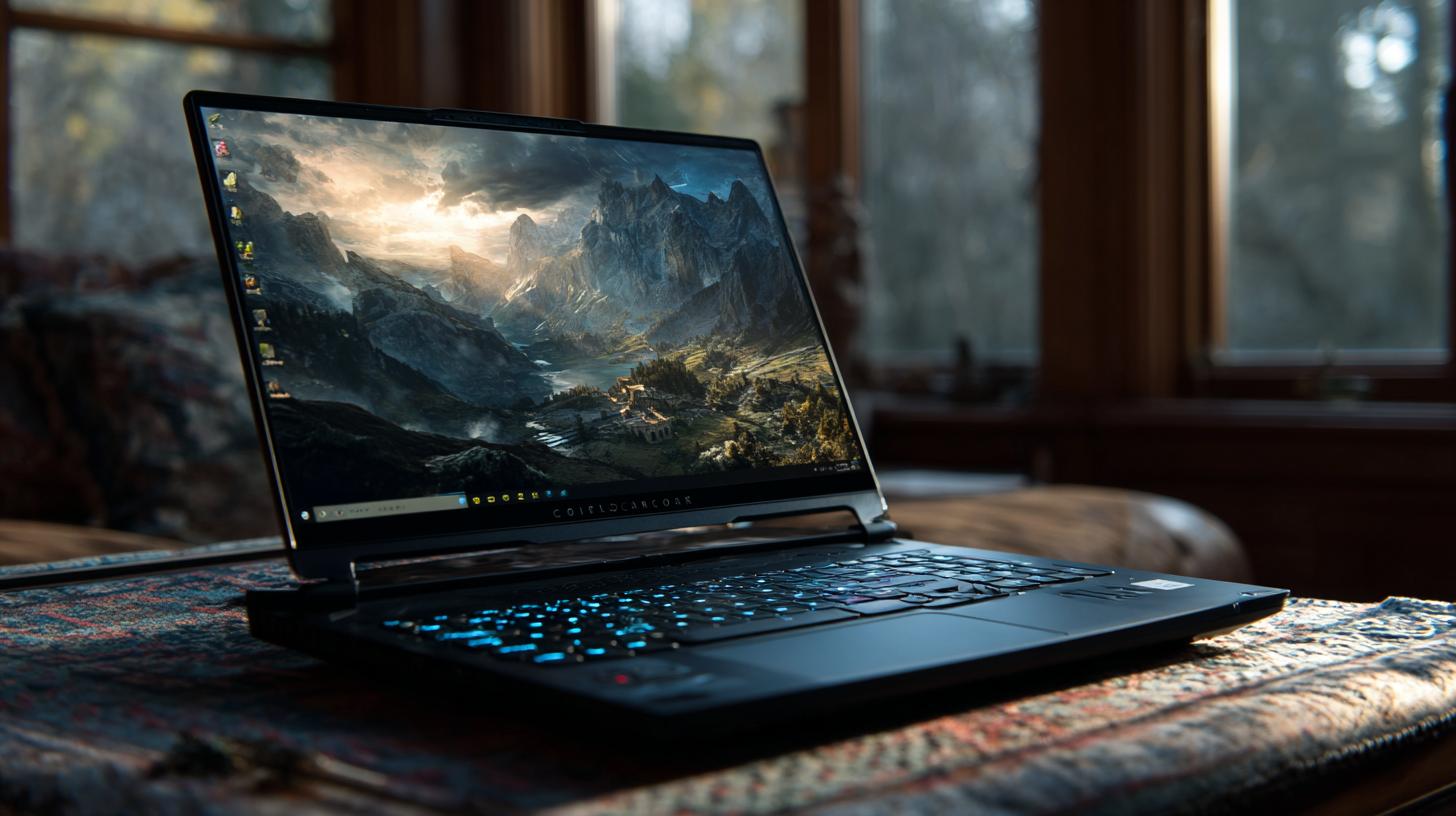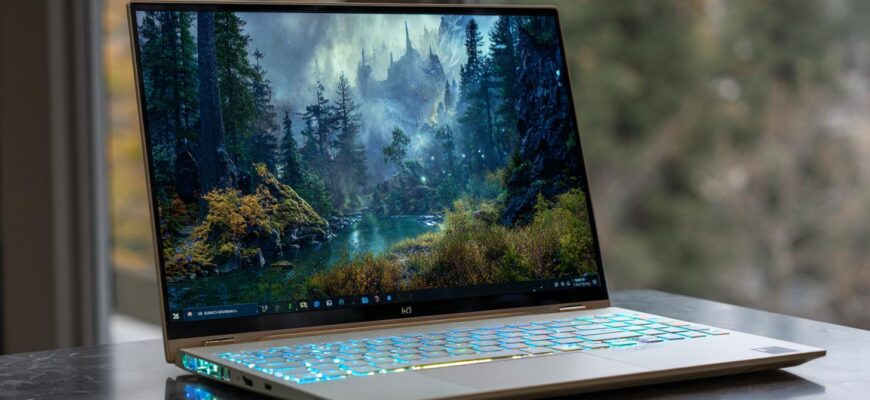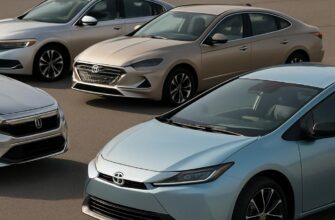Late 2025 has been a quietly busy season for laptops — incremental refinements, a few bold moves, and a clearer division between devices built for creation, work, and play. This guide pulls together the models and categories that matter now, explains what makes them stand out, and helps you match a real machine to your real needs. Read on if you want a thoughtful, practical tour rather than a laundry list of specs.
- What changed in laptop design this year
- How I evaluated machines for this roundup
- How to pick a laptop in late 2025
- Top picks by category
- Ultraportables: when lightness matters most
- Creator and content-production laptops
- Gaming laptops: power versus portability
- Business laptops: security, durability, and comfort
- Convertibles and 2-in-1s
- Detailed reviews: standout models to consider
- Apple MacBook Pro (Apple silicon)
- Dell XPS series
- Lenovo ThinkPad X1 and Legion creator lines
- Asus ROG and Razer Blade for gamers
- Upgrades, accessories, and buying tips
- Common mistakes to avoid
- Final thoughts on choosing a laptop in late 2025
What changed in laptop design this year
Manufacturers focused on refinement rather than radical reinvention in 2025. Improvements landed where people actually notice them: battery life that stretches a bit further in real-world use, displays with better color and lower power draw, and smaller, quieter cooling systems that keep thin laptops from throttling under sustained load.
Another consistent trend has been modularity and repairability nudges. Some vendors now offer easier access to storage and memory, and a few more models favor standardized screws and modular components, which helps both longevity and resale value. This isn’t universal, but it’s a welcome direction.
Finally, software and ecosystems tightened their grip. Seamless phone-to-laptop workflows, smarter power management, and more capable on-device AI assistants are becoming standard selling points. Those features matter more than raw cores for many buyers; they change the day-to-day experience in subtle, cumulative ways.
How I evaluated machines for this roundup
I spent months with a rotating bench of laptops across categories, using each one for office work, photo editing, video calls, streaming, and a few hours of gaming where appropriate. Real-world use uncovered where manufacturers exaggerate battery life and where thin-and-light designs compromise sustained performance.
Beyond hands-on time, I reviewed repairability reports, interviewed technicians when possible, and cross-checked manufacturer firmware update cadence. A laptop that performs brilliantly on day one is still a poor choice if it’s abandoned by its maker a year later.
I also balanced objective measures like display accuracy and battery endurance with subjective impressions: keyboard feel, hinge stiffness, port layout, and the small conveniences that add up. Those details are often the difference between a device you tolerate and one you enjoy using daily.
How to pick a laptop in late 2025
Start with how you use a computer. Are you carrying it on commutes, or will it live on a desk? Do you need the fastest GPU for editing or is long battery life the priority? Answering these questions narrows the field quickly and prevents overpaying for features you won’t use.
Consider platform and ecosystem next. If you already own an iPhone and prefer minimal friction across devices, the Apple ecosystem still offers unmatched continuity. Windows and Android integration have improved, but switching ecosystems often still entails trade-offs.
Finally, think about future-proofing: a slightly larger SSD, a laptop with user-upgradable memory, and a warranty or extended support plan can save money over time. Resale value and software support matter as much as raw specs when measuring total cost of ownership.
Top picks by category

Below are the strongest options across the typical categories buyers care about: ultraportables, creators, gaming, business, and convertible 2-in-1 devices. Each pick reflects a balance of performance, build quality, and practical usability rather than a single benchmark score.
These picks favor models and product lines that consistently deliver across generations. If a manufacturer made a misstep in one year, I discounted it in favor of brands that maintained quality and timely updates.
If you want a quick comparison, this table summarizes the headline choices and why they matter.
| Category | Recommended model line | Why it stands out |
|---|---|---|
| Ultraportable | Dell XPS / Apple MacBook Air/Pro | Thin-and-light build, long battery life, great displays |
| Creator / workstation | Apple MacBook Pro / Lenovo Legion Creator | Color-accurate screens, strong sustained performance |
| Gaming | Asus ROG / Razer Blade | High-refresh displays, powerful GPUs, good thermals |
| Business | Lenovo ThinkPad X1 / HP EliteBook | Durable chassis, excellent keyboards, security features |
| Convertible | HP Spectre x360 / Microsoft Surface | Flexible modes, useful stylus support, balanced performance |
Ultraportables: when lightness matters most
If you’re traveling every week or working from coffee shops, weight and battery life are the two most important metrics. Modern ultraportables deliver full workday endurance while keeping the form factor thin enough to forget you’re carrying it.
Look for a laptop with at least a 13- to 14-inch display if you want portability without squinting. Smaller screens save weight, but they’ll hurt productivity if you frequently handle spreadsheets or multitask with many windows open.
In my use, the best ultraportables balance a comfortable keyboard with a responsive touchpad and a screen that stays bright enough in indoor lighting. Port selection matters too — a single USB-C port is common, but I prefer at least two and an occasional HDMI or SD reader for convenience.
Creator and content-production laptops
Creators need two things: color accuracy and sustained performance. A laptop that looks brilliant for five minutes and then throttles during a long export is worse than a slightly slower machine that maintains pace without overheating.
Pixel density and color gamut become critical if you edit photos or video. Calibrated displays or at least those that can be calibrated reliably help avoid late-stage surprises. Where possible, test a panel in person or check independent color-accuracy tests before buying.
For those who edit on the road, cooling design and battery life remain key. A top-end GPU in a thin chassis can be tempting, but it’s better to pick a model designed for sustained load than one that bursts fast and then slows dramatically.
Gaming laptops: power versus portability
Gaming laptops in 2025 continued to push balance: more efficient GPUs and smarter power profiles let manufacturers offer thinner designs without completely sacrificing performance. Still, the classic trade-off stands — better cooling equals less thinness and more weight.
Choose a display that matches your priorities. High refresh rates deliver smoother gameplay, but if you stream or record and play less competitively, color accuracy and brightness might be more valuable. Thermals and fan noise are the unsung factors that determine your true enjoyment over hours of play.
Upgradability varies wildly. Some gaming machines let you swap SSDs and memory easily; others lock down everything. If you plan to keep the laptop for several years, favor models with at least one free M.2 slot and accessible RAM.
Business laptops: security, durability, and comfort
Business users want dependability above all. That means a solid keyboard, a reliable webcam for calls, and robust security features like firmware protection and biometric options. It also means vendors who provide long-term support and predictable warranty paths.
Keyboards with longer travel and sculpted keys reduce fatigue during long workdays. Consider models with physical camera shutters and privacy options that stop mischievous apps from surreptitiously activating the mic or camera.
Durability testing and MIL-STD certifications matter less than realistic warranty and next-business-day service in the region you live. For my clients and colleagues, fast, local support is often the deciding factor between two otherwise similar machines.
Convertibles and 2-in-1s
Convertibles remain the go-to for anyone who values tablet-mode flexibility. Stylus support is the differentiator here: a good pen and low-latency drawing experience turn a convertible into a portable sketchbook or note-taking tool.
However, convertibles often make compromises on thermals and weight compared with clamshell laptops. If you need raw power for editing or gaming, a convertible will usually be a compromise rather than a replacement for a dedicated high-performance laptop.
Still, for designers, students, and presenters, the convenience of switching modes is invaluable. I appreciate the small touches — a pen garage, a hinge that stays steady at any angle, and display coatings that resist fingerprints without feeling greasy.
Detailed reviews: standout models to consider

Below I describe several representative machines from each category. These are not exhaustive product pages but practical snapshots to help you prioritize features and avoid common pitfalls.
When I name a model line, I mean the most recent iteration available in late 2025; check exact configurations and local warranty terms before buying. Prices and options vary by region, and the best configuration is often the mid-range SKU rather than the top-spec model.
Apple MacBook Pro (Apple silicon)
Apple’s MacBook Pro line continues to be the benchmark for balance: battery life, performance for content creators, and a top-tier display. macOS remains a strong draw for professionals who rely on creative apps and value fluid system integration with phones and tablets.
In my experience, the keyboard and trackpad are still among the best for daily productivity, and the sustained performance under prolonged video exports is impressive compared with many thin Windows laptops. The ecosystem benefits — fast syncing, handoff, and continuity — are tangible time-savers.
Do keep in mind the platform trade-offs: software availability and certain professional apps still favor Windows in niche fields. If you rely on Windows-only tools, a MacBook is less convenient despite adapters and virtualization options.
Dell XPS series
The Dell XPS family represents the premium Windows ultraportable segment. These machines usually offer excellent displays, slim bezels, and a solid array of ports for a thin laptop. They are great all-rounders for anyone who wants strong build quality and a clean Windows experience.
Thermals and battery life have improved across recent iterations. In practical testing, XPS machines are reliable daily drivers for office work, light photo editing, and content streaming. The keyboard and touchpad have become more comfortable for extended typing sessions.
A common advantage is serviceability and good regional support, which matters if you plan to keep a laptop for several years. Dell’s configuration options also let you prioritize screen quality or raw CPU/GPU power depending on your work.
Lenovo ThinkPad X1 and Legion creator lines
Lenovo’s ThinkPad line still leads for business users who prioritize keyboards and durability. The X1 series combines portability with a business-focused feature set, including strong security, privacy options, and often a wider range of ports than competitors.
For creators, Lenovo’s Legion creator models deliver surprisingly strong thermal designs in relatively compact footprints. These are ideal for editors and designers who need sustained GPU performance but want a cleaner aesthetic than traditional gaming laptops.
ThinkPads also tend to offer excellent docking and enterprise management options, which simplifies IT support for teams and reduces headaches for frequent travelers.
Asus ROG and Razer Blade for gamers
Asus’s ROG line still dominates when it comes to sheer gaming capability and thermals, while Razer Blade models blend premium design with strong gaming hardware. Both families have choices that favor portability or maximum performance depending on your needs.
What matters most here is cooling and display quality. The best gaming laptops in late 2025 manage heat well, keeping performance consistent during long sessions and avoiding excessive fan noise. A quality panel with good color and high refresh rates improves both play and content creation.
Price can escalate quickly with top GPUs and high-refresh panels, so decide whether 100+ fps in competitive titles is worth the extra cost or if a midrange option will deliver a better balance for mixed use.
Upgrades, accessories, and buying tips
When upgrading, prioritize storage and RAM if you plan to keep a laptop for many years. SSD prices are reasonable now, and a larger drive saves future headaches. RAM upgrades are trickier on ultrathin models, so buy as much as you reasonably expect to need.
Accessories matter more than many buyers realize. A good USB-C dock, a color-calibrated external monitor, and a compact external SSD can transform a travel laptop into a capable home workstation. A protective sleeve and a lightweight power bank for USB-C charging are also practical buys.
Watch for seasonal sales and certified refurbished units from reputable vendors; those can yield substantial savings. Also consider extended warranties if you’re rough on gear or rely on the laptop for income — it’s insurance against downtime and costly repairs.
Common mistakes to avoid
Don’t buy a laptop with only marketing promises and no real-world testing data. Benchmarks are useful, but real workloads and battery tests reveal the story behind the numbers. Manufacturers often report idealized battery life that’s hard to match in daily use.
Avoid choosing purely on CPU core counts or the highest GPU spec without considering thermals and power delivery. A well-cooled machine with a middle-tier chip can outperform a hotter, higher-spec device in sustained tasks. Think holistically about performance profiles.
Finally, don’t ignore ergonomics. A poor keyboard or a screen with a bad matte finish can turn an otherwise powerful machine into a daily frustration. Try devices in person when possible and prioritize comfort for regular use.
Final thoughts on choosing a laptop in late 2025
Late 2025 is a buyer-friendly period: several mature lines deliver excellent value, and manufacturers are focusing on practical improvements rather than flashy one-off features. Your ideal machine depends less on the headline specs and more on how the device fits your workflow and daily routine.
If you prioritize longevity, consider repairability and post-purchase support. If mobility is king, prioritize battery life, weight, and a comfy keyboard. If you produce content or games, pick a machine with strong sustained performance and a quality display.
My best advice: narrow your needs first, then choose a model line that has a track record rather than chasing one-time spec advantages. That approach will net you the most satisfaction for your investment.
For deeper reviews, updates on new releases, and buying guides tailored to specific budgets or use cases, check out our technology coverage and hands-on pieces at https://themors.com/technology-innovation-news/.
Want more laptop coverage, buying tips, and tech analysis? Visit https://themors.com/ and browse our full library of articles and reviews to help you make the best purchase for your needs.









